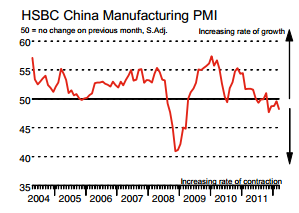European leaders are under intense pressure to try to resolve the crisis at a June 28 to 29 EU summit as Spain struggles to keep the debt wolves at bay and Germany holds its hard-line stance that reform and austerity come before growth.
Madrid is now asking for deeper eurozone integration so that European rescue funds can be directly pumped into lenders, thereby avoiding the Irish trap where saving the banks forced the country into a massive bailout.
Spanish Finance Minister Luis De Guindos said Madrid has to move quickly, making a decision within the next two weeks on how to help its lenders who are struggling to raise €80 billion ($A102.83 billion) to shore up their books.
Europe “must help nations in difficulty”, Spanish Prime Minister Mariano Rajoy said as he called for a list of EU reforms viewed with suspicion by Germany including deposit guarantees, a banking union and eurobonds.
The proposal gaining the most traction outside Germany is to integrate the eurozone’s national banking systems, which would sever the link between banks and sovereign finances.
But powerhouse Germany resisted the pleas, saying whatever help the EU can provide to an increasingly desperate looking Madrid should come from the tools, and according to the rules, already in place.
A German government spokesman said the reforms asked for by Mr Rajoy required long-term changes beforehand, reiterating that only governments can apply for cash from the European bailout funds.
ECB Chief Mario Draghi sought to calm fears, saying the eurozone debt crisis is “far” from as bad as the global market meltdown in the wake of the 2008 collapse of US investment bank Lehman Brothers.
[Banner name=”Trading Tools Banner”]
Euro Dollar:
EURUSD (1.2561) The euro gained against the dollar and other currencies on Wednesday after European Central Bank President Mario Draghi hinted officials remain open to easing policy, while U.S. central banks said more bond purchases remain an option.
Hopes for more monetary stimulus spurred higher-returning assets like stocks and prompted a shift out of safer havens like U.S. and German bonds and the greenback.
The euro rose to $1.2561, versus $1.2448 in late North American trade Tuesday. The shared currency hit a high of $1.2527 earlier. The dollar index which measures the greenback against a basket of six major currencies fell to 82.264, from 82.801 late Tuesday.
The Great British Pound
GBPUSD (1.5471) Sterling rose against a broadly softer dollar on Wednesday as speculation over further U.S. monetary stimulus increased, although the outlook for the pound was clouded by concerns the euro zone debt crisis would drag on the UK economy.
Comments from Atlanta Federal Reserve President Dennis Lockhart that policymakers may need to consider further easing if the U.S. economy faltered or the euro zone debt crisis intensified added to demand to sell the dollar.
The pound rose 0.6 percent on the day to $1.5471, pulling away from a five-month low of $1.5269, hit last week after dismal UK manufacturing figures.
It rallied against the dollar in line with other perceived riskier assets as some investors cut short positions after the European Central Bank kept interest rates on hold.
The next focus for investors is a Bank of England rate decision on Thursday. Consensus forecasts are for the bank to keep rates and its quantitative easing on hold, although some market players said there could be a QE increase of up to 50 billion pounds given the risk of the euro zone debt crisis further damaging the UK’s economic outlook
Asian –Pacific Currency
USDJPY (79.16) The dollar climbed above 79 yen in Tokyo as market participants remained vigilant over Japan’s possible yen-weakening market interventions following a teleconference of Group of Seven financial chiefs.
The dollar was quoted at 79.14-16 yen, rising above the 79 yen line for the first time in about a week, compared to 78.22-23 yen at the same time Tuesday. The euro was at 1 dollars.2516-2516, up from 1 dollars.2448-2449, and at 99.06-07 yen, up from 97.37-38 yen.
The dollar soared on comments from Finance Minister Jun Azumi following the teleconference of finance ministers and central bank governors of the G-7 major industrial nations, which was held Tuesday night to tackle the European debt crisis.
Gold
Gold (1634.20) and silver prices have surged, continuing a rebound from their recent lows as investors bet that easy-money policies from central banks in Europe and the US would drive demand for the precious metals as currency alternatives.
The most-actively traded gold contract, for August delivery, rose $17.30, or 1.1 per cent, to settle at $1,634.20 a troy ounce on the Comex division of the New York Mercantile Exchange, the highest ending price since May 7.
The renewed life in the battered gold market – futures, through Wednesday, were up 4.4 per cent from a week ago – has come as investors bet that flagging global growth would compel central banks to pump more money into the global financial system.
Gold and other precious metals can benefit from such accommodative monetary policies, as investors seek a hedge against declines in paper currencies.
On Wednesday, Federal Reserve Bank of Atlanta President Dennis Lockhart said that “further monetary actions to support the recovery will certainly need to be considered” if modest domestic growth is no longer realistic.
Crude Oil
Crude Oil (85.02) prices have headed higher, joining stock markets in welcoming the European Central Bank’s (ECB) signals of support to ailing eurozone banks.
The ECB’s keeping interest rates on hold rather than cutting them also helped the euro strengthen, pulling crude prices up with it.
New York’s main contract, West Texas Intermediate crude for delivery in July, ended the day at $US85.02 a barrel, up 73 US cents from Tuesday’s closing level.
In London, Brent North Sea crude for July, added $US1.80 to settle at $US100.64 a barrel.
Both contracts closed significantly off earlier gains.
